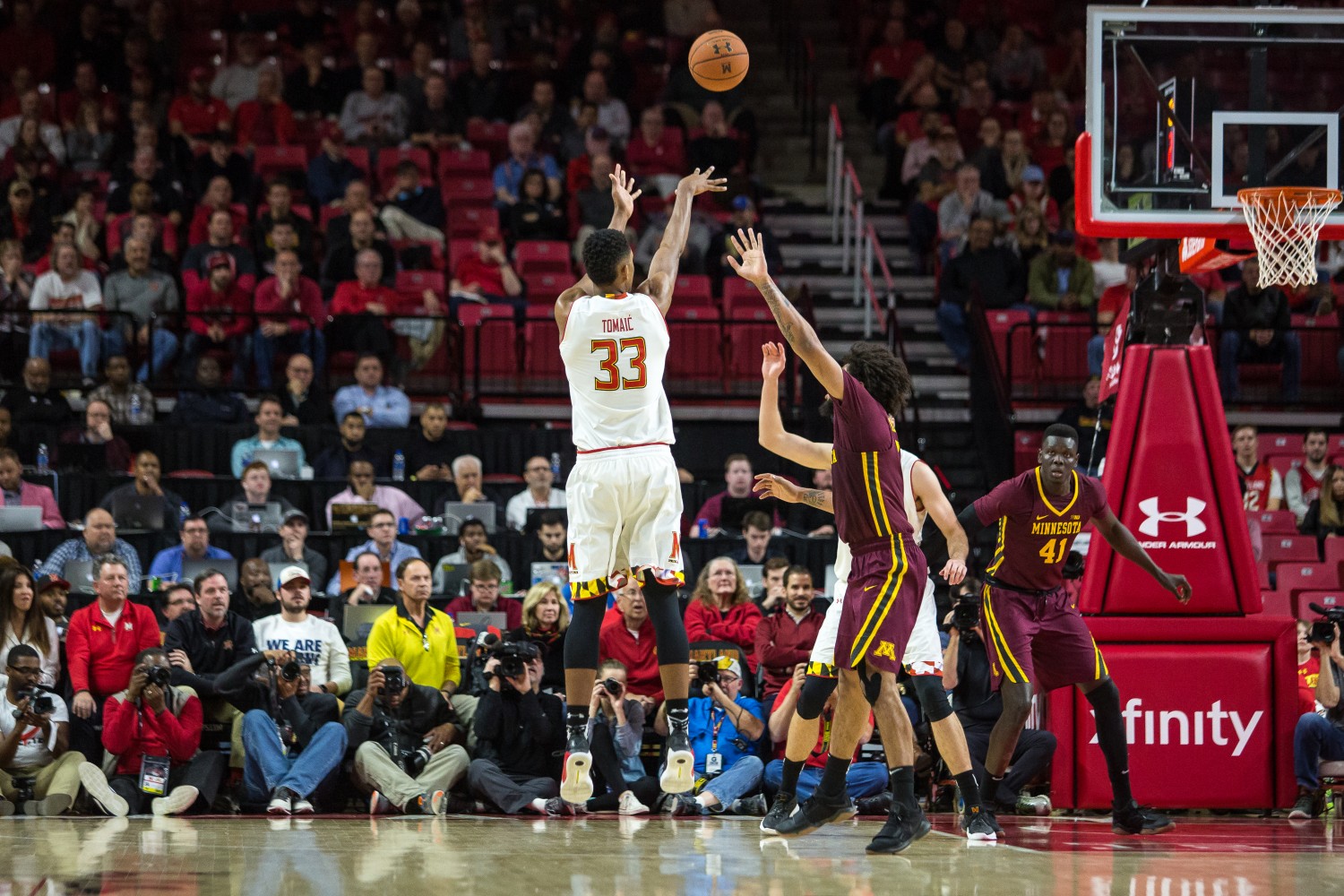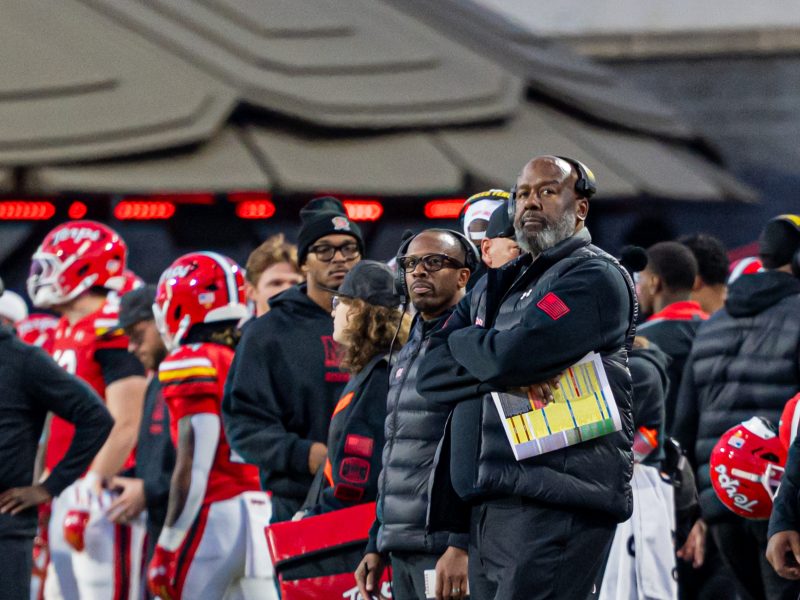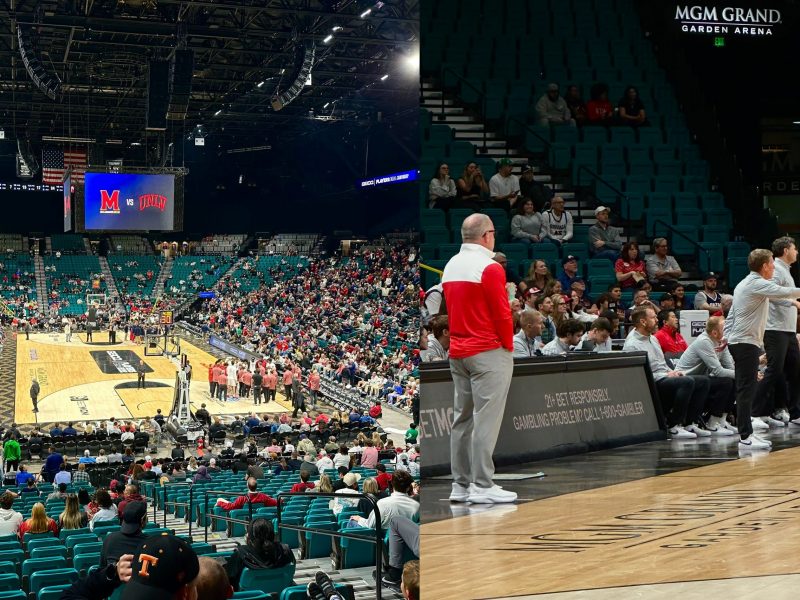Stop me if you’ve heard this before: Maryland men’s basketball is too reliant on 3-pointers. Shocking, right?
It’s no secret that the Terps lean on the three offensively, especially as a last-second attempt late in the shot clock. But the stat-savvy staff at Terps Watch dug deeper into Maryland’s three-point shooting, to show how the Terps are actually worse off when they shoot a ton from beyond the arc.
Ohio State is on a 22-4 run and Ceko had to shoot a three so, uh, yeah. pic.twitter.com/gGtERc57B5
— Terps Watch (@TerpsWatch) January 12, 2018
Maryland has been inconsistent this season, mainly due to the various injuries it’s faced. But one thing that’s been consistent for Mark Turgeon’s team has actually been winning games in the paint.
It’s unheard of in Turgeon offenses, but this season, the Terps are a perfect 8-0 when attempting fewer than 20 three-point shots. Even with sharpshooters Anthony Cowan and Kevin Huerter leading the team in scoring, Maryland is only 7-7 when shooting 20 or more treys.
It’s not surprising to see more three-pointers taken in losses, as the Terps continually find themselves working to come back from early deficits, but it’s a sign that efficient offense wins games. When Maryland is getting shots inside, which are usually easier shots, it leads to wins. That makes sense.
This is easier said than done with Justin Jackson and Ivan Bender done for the year, but scoring inside doesn’t have to be entirely on the frontcourt. Melo Trimble’s best games came when he could create plays on the dribble drive, either finishing at the rim or dishing it out to others. Since Trimble’s departure, Anthony Cowan is taking after him more and more every game.
Anthony Cowan makes it look easy pic.twitter.com/eb7gDIzDKZ
— Terps Watch (@TerpsWatch) January 8, 2018
Bruno Fernando has also proven he’s able to take over the scoring for Maryland. While Cowan may be the Terps’ top scorer, Fernando is averaging 19.3 points per 40 minutes and 28.1 points per 100 possessions, both of which lead the team on the season. Foul trouble and injury have kept Fernando off the floor a bit this season, but he can control the game when everything’s going right.
Bruno Spin-nando pic.twitter.com/oAKKY1jDO5
— Terps Watch (@TerpsWatch) January 23, 2018
On top of that, Maryland is 6-1 when Michal Cekovsky is in double digits, and Joshua Tomaic has shown spurts of scoring after Bender’s injury. With Jackson and Bender out, the remaining big men need to take on a larger role.
This may not seem like the best strategy for the Terps — they’re sixth in the conference in two-point shooting (.534), and third in the conference in three-point shooting (.391). But those averages come with a Maryland offense that’s heavily focused on working around the arc and shooting from the outside.
Shifting the offense to an inside-out progression would allow for more efficiency on both levels — the Terps would work for open shots inside and get outside shots off skip passes and second-chance attempts. As teams have become accustomed to the Turgeon style of play, the guards face a lot of pressure around the arc, but going inside to start would only spread the floor more.
In the 2015-16 season — one Maryland fans likely want to forget — Turgeon wasn’t able to get all his talent to come together. With Diamond Stone and Robert Carter down low, the offense could’ve opened up much more working inside-out. Even with Trimble, Jake Layman, Rasheed Sulaimon and all the other shooters the team had, the Terps couldn’t outgun their opponents every night.
That team had a much better record than Maryland does at this part of the season, but there are similar stats looking at their records. The Terps finished 27-9 that season, and seven of their defeats came when they shot 20 or more times from deep. When they put up fewer than 20 three-point attempts in a game, they were 13-2.
Sulaimon starts celebrating this Layman 3 well before Layman shoots it. https://t.co/DSAVXb4OCH
— Terps Watch (@TerpsWatch) March 18, 2016
The Terps have won games in the past when they shoot the lights out, and they certainly will in the future. But this Maryland team doesn’t have the same shooters from 2015-16, so that’s not what this team can rely on. The best way to work the offense is through driving and post plays, and letting players distribute from there.
We all love to watch Bruno Fernando’s rim-rattling alley-oops. If the offense shifts its focus toward its strength, we can look forward to seeing a lot more.



